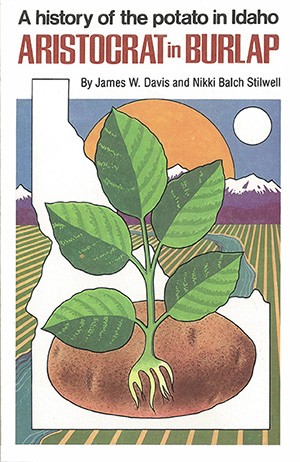 Allen Noble with sprinklers at Dry Lake project.
Allen Noble with sprinklers at Dry Lake project.
In the meantime, eager homesteaders had filed their claims and established their homesteads awaiting the coming of the irrigation canals to begin farming. Having fulfilled the homestead requirements, patents were granted on the farms although they were never put into production. Many of the homesteaders were not able to keep up the taxes and the lands reverted to the county to be sold for taxes. Others maintained their ownership in the hopes that someday the fertility of the soil would be unlocked by the availability of water and their 30-year dream would become a reality.
As it turned out, water came to the Dry Lake region not through the activities of the Bureau of Reclamation, but through the ingenuity of a young Nampa businessman, Allen Noble, who had been raised on a farm and gone into the farm-implement business in Nampa, Idaho. Noble met many farmers and landowners in the area through his business.
One day, he was quite unexpectedly offered a parcel of land in the Dry Lake area for $25 an acre. Noble knew that no water was available for the land but, since the individual seemed quite anxious to dispose of it, he condescended to visit the area and look at the sagebrush-covered tract.
Another Nampa area farmer, Elmer Tiegs, had purchased acreage in the Dry Lake area and had drilled wells to supply water. The underground water proved to be a solution to the problem with marginal economics. The wells had to be drilled to nearly 700 feet in depth and the water supply proved to be limited. The long water lift and the limited supply made the advisability of further Dry Lake development from wells highly questionable.
While inspecting the area, Noble was impressed by the fertility of the land that Tiegs had brought under cultivation, but discouraged by the lack of availability of underground water. While on the site, he drove his pickup across the tract to the point where the plateau ended at rimrock 500 feet above the Snake River. Noble looked off the edge of the cliff at the green waters flowing in the Snake and asked the question, "Who owns the rights to all of that water flowing down the Snake River?" The Idaho Power Company was currently in the process of constructing three dams downstream in Hells Canyon for the generation of electrical power and the answer was given that the water rights probably belonged to the Idaho Power Company.


 Allen Noble with sprinklers at Dry Lake project.
Allen Noble with sprinklers at Dry Lake project.